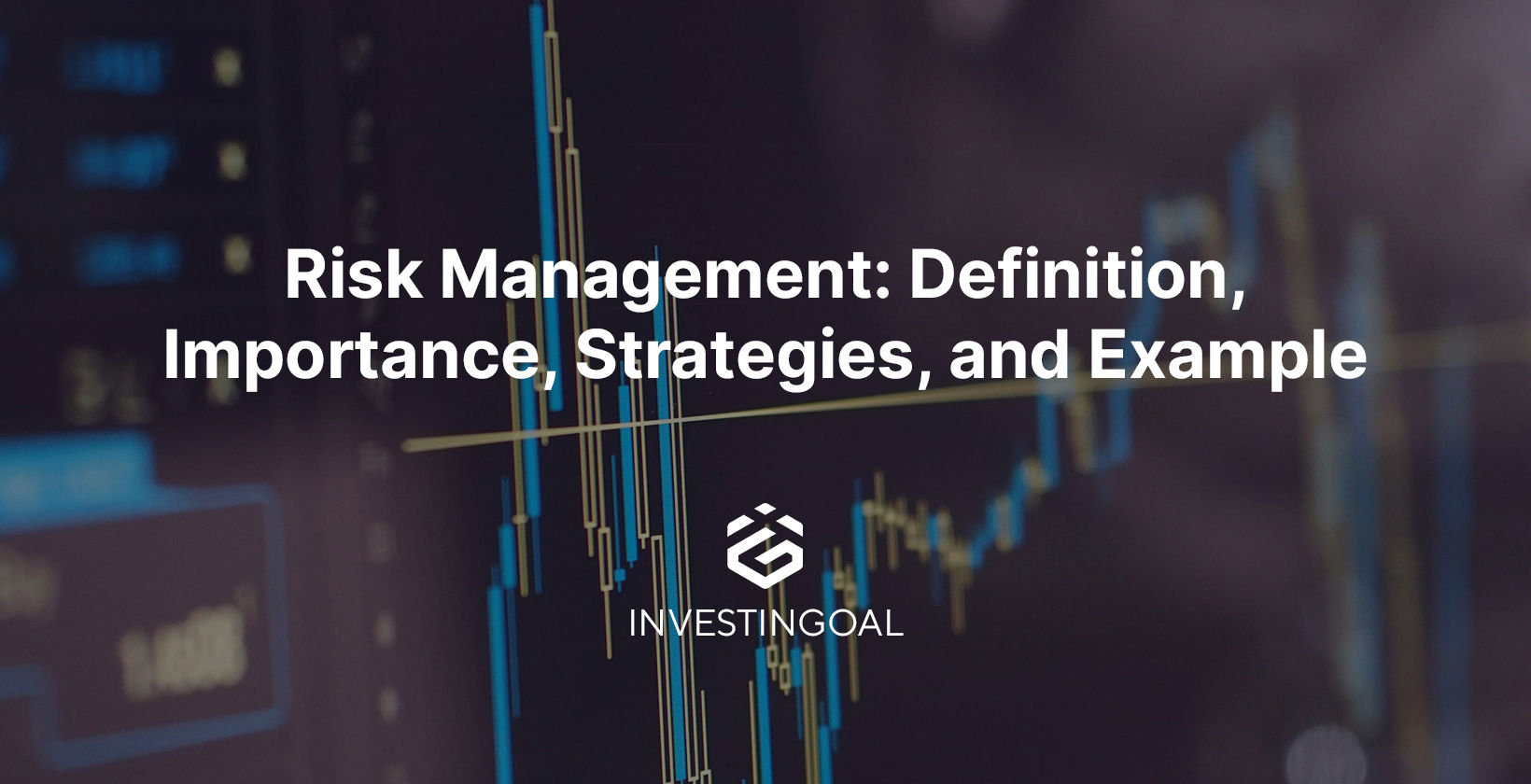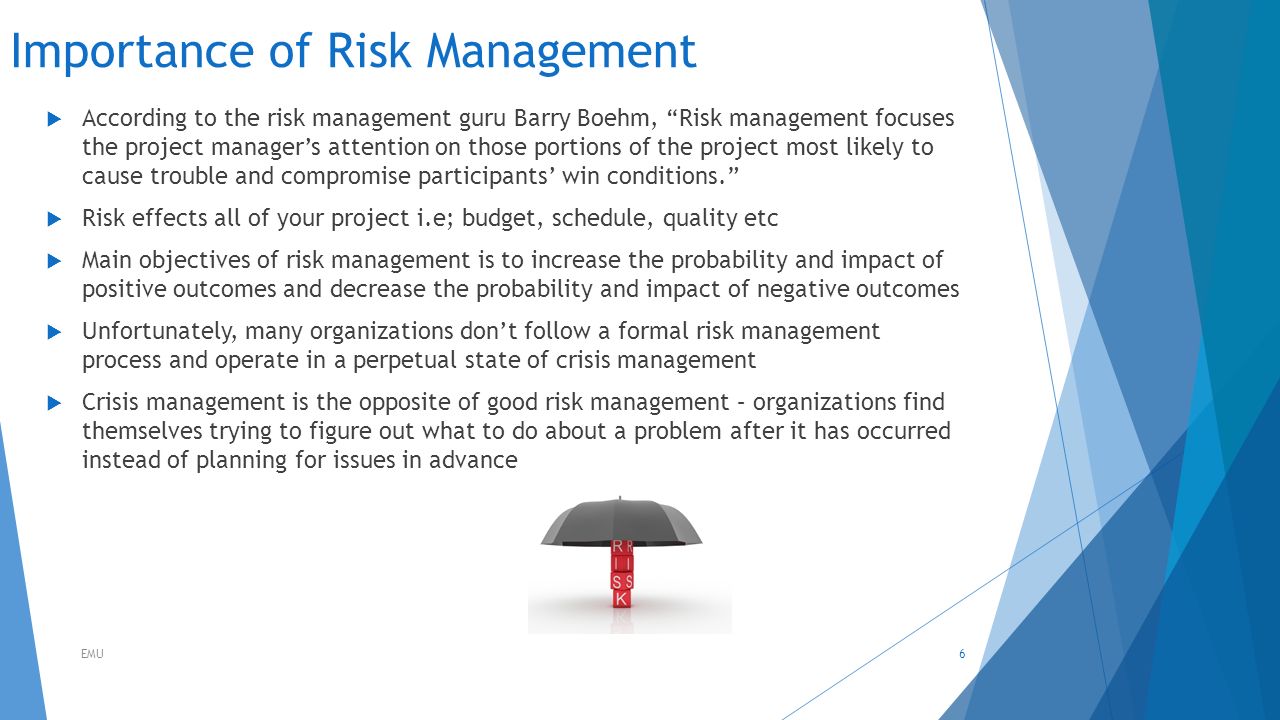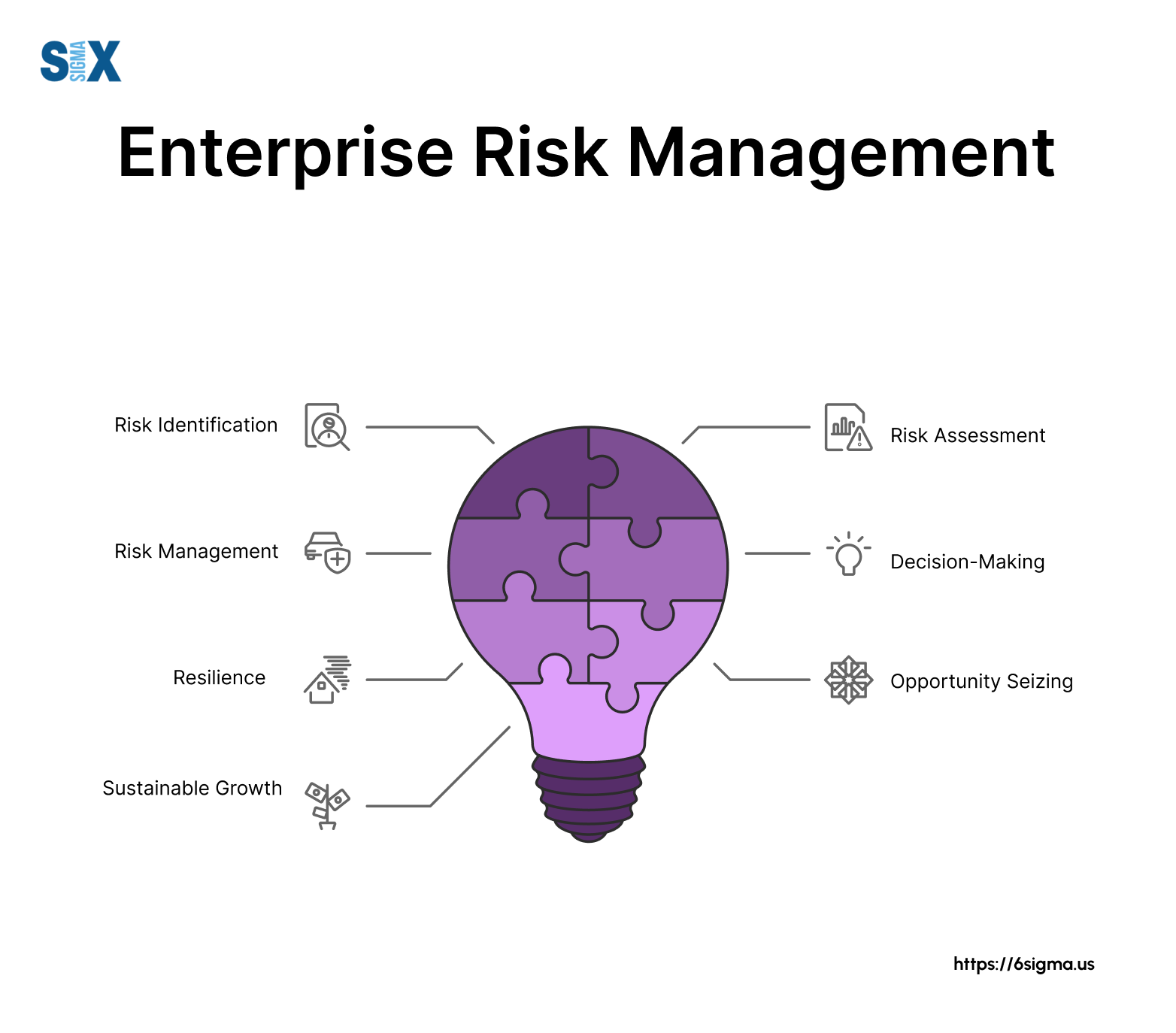How the Importance of Risk Management Shapes Strong Leadership
How the Importance of Risk Management Shapes Strong Leadership
Blog Article
The Vital Value of Risk Management in Getting Business Goals
In the quickly evolving service landscape, the capacity to navigate uncertainty has actually become an important. This is where Risk Management actions in, supplying a structured approach to recognizing, analyzing, and mitigating potential barricades to advance. It's greater than simply a safety procedure - it's a strategic device, fostering durability and innovation. As we check out the vital function of Risk Management in attaining organizational objectives, one can't help but question: just how does this translate into real-world success?
Recognizing the Principle of Risk Management in Service

The Indispensable Duty of Risk Management in Strategic Planning
Integrating Risk Management into tactical planning acts as a guard for organizations, anchoring their lasting strategies with a strong structure of readiness and strength. It runs as the organization's radar, spotting prospective dangers and vulnerabilities that could interrupt the course in the direction of achieving their stated goals. Risk Management supplies a structure for anticipating uncertainties and designing ideal reactions, guaranteeing the company's survival and prosperity also despite adversity. By including Risk Management right into critical preparation, companies can change these unpredictabilities right into possibilities for development and advancement. This critical interweaving of Risk Management cultivates flexibility, making companies extra durable and enabling them to browse the ever-changing company landscape with confidence. Subsequently, Risk Management ends up being an indispensable tool in critical preparation, crucial in protecting lasting success.

Strategies for Identifying, Assessing, and Focusing On Risks
Browsing the complex landscape of risks requires the application of specific methods for their recognition, assessment, and prioritization. The process begins with Risk recognition, using tools such as SWOT analysis, which aids in identifying prospective dangers and chances. Next, Risk assessment is performed to determine the possible effect and possibility of each Risk. Devices such as Risk matrices and impact-probability charts are used for this. Lastly, dangers are prioritized based on their prospective effect and possibility, allowing organizations to focus their resources on critical risks. This systematic method guarantees a detailed understanding of the Risk landscape, allowing companies to make informed choices and efficiently handle dangers to attain their goals - importance of risk management.
Guarding Organizational Workflow Through Effective Risk Management
In the organization you can look here landscape stuffed with uncertainties, efficient Risk Management plays a pivotal duty in safeguarding business operations. By recognizing and analyzing prospective hazards, Risk Management allows companies to develop robust backup strategies. Organizations have to spend in thorough Risk Management strategies to guard their procedures.

Transforming Possible Risks to Opportunities: The Power of Risk Management
While prospective risks could initially show up as roadblocks to business success, effective Risk Management helpful site can transform them right into possibilities. An aggressive approach to run the risk of Management includes recognizing, evaluating, and prioritizing threats to design methods that turn them right into potential benefits. This procedure demands the growth of a risk-aware society within the organization, encouraging individuals to check out threats as prospective drivers for change and development, rather than plain hazards. importance of risk management. With this lens, potential dangers become opportunities to introduce, boost processes, and reinforce durability. Thus, by leveraging the power of Risk Management, organizations can not only secure their procedures but likewise spur development and accomplish their objectives in an uncertain business atmosphere.
Instance Studies: Success Stories of Risk Management Driving Business Objectives
Successful implementation of Risk Management techniques has actually produced excellent cause various services, highlighting the values of this technique. Multinational companies like Microsoft and Google, for instance, have actually leveraged Risk Management to lessen threats and exploit opportunities, driving their company objectives forward. Microsoft's aggressive Risk Management method aided it pivot quickly during the 2020 pandemic, transitioning to remote job efficiently, thus preserving efficiency. Google, by assessing and reducing possible threats in its cloud-based services, has made certain continuous solution, consequently enhancing customer depend on. These examples show exactly how successful Risk Management can not only guide services clear of prospective pitfalls however also guide them towards their tactical purposes. Thus, Risk Management is important to the quest of organizational objectives.
Conclusion
In conclusion, Risk Management is fundamentally crucial in achieving business objectives. By integrating Risk Management right into strategic preparation, services can better browse uncertainties, safeguard operations, and capitalise on possibilities, consequently straightening with long-term purposes.
At site its core, Risk Management is the procedure of identifying, analyzing, and addressing prospective dangers that can adversely affect a company's purposes or procedures. Next, Risk evaluation is conducted to determine the possible effect and likelihood of each Risk. Threats are prioritized based on their potential effect and probability, permitting organizations to concentrate their resources on critical risks. By recognizing and examining possible hazards, Risk Management enables organizations to establish durable contingency strategies. A positive method to run the risk of Management involves identifying, analyzing, and prioritizing dangers to develop techniques that transform them right into prospective advantages.
Report this page